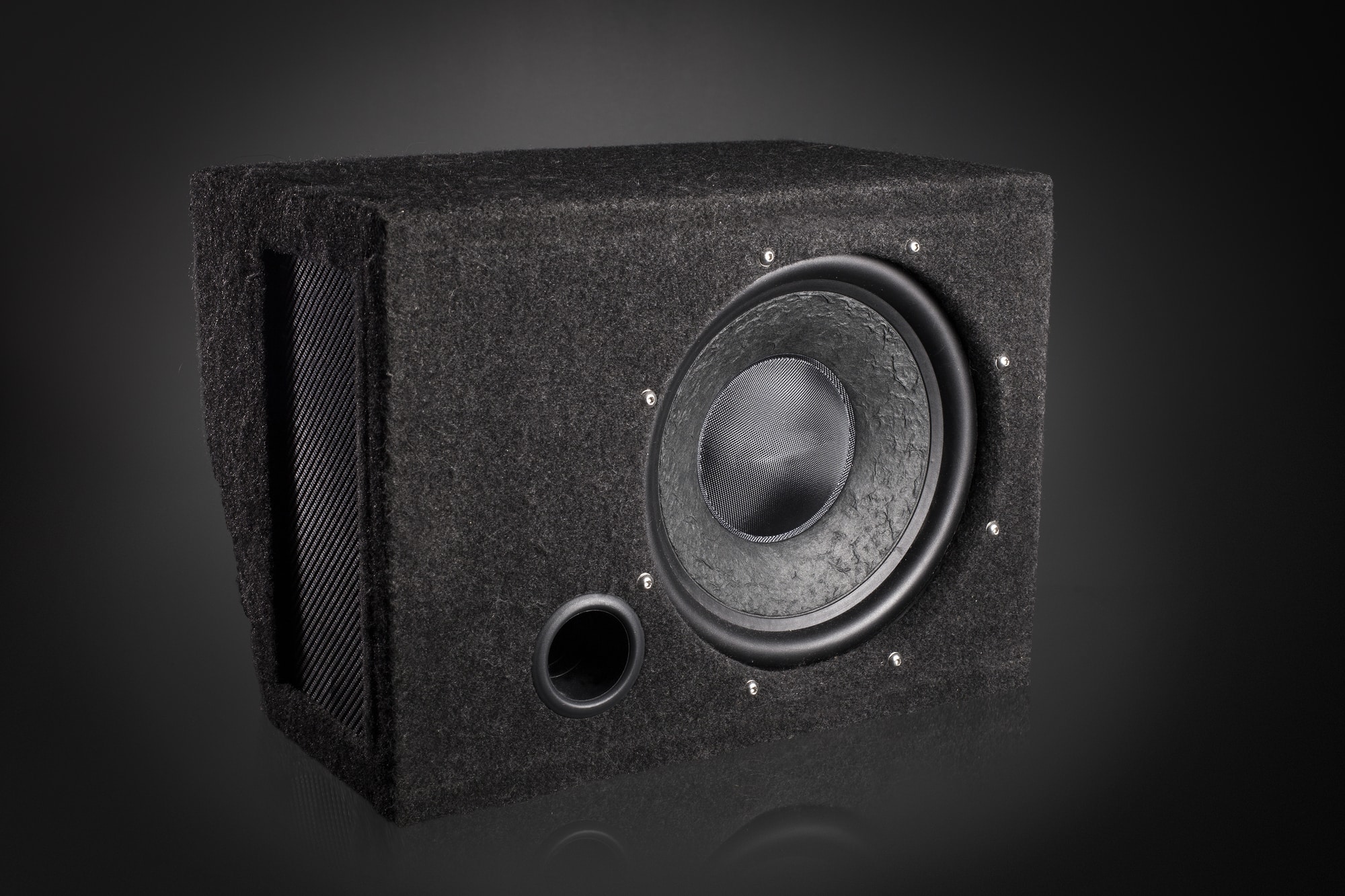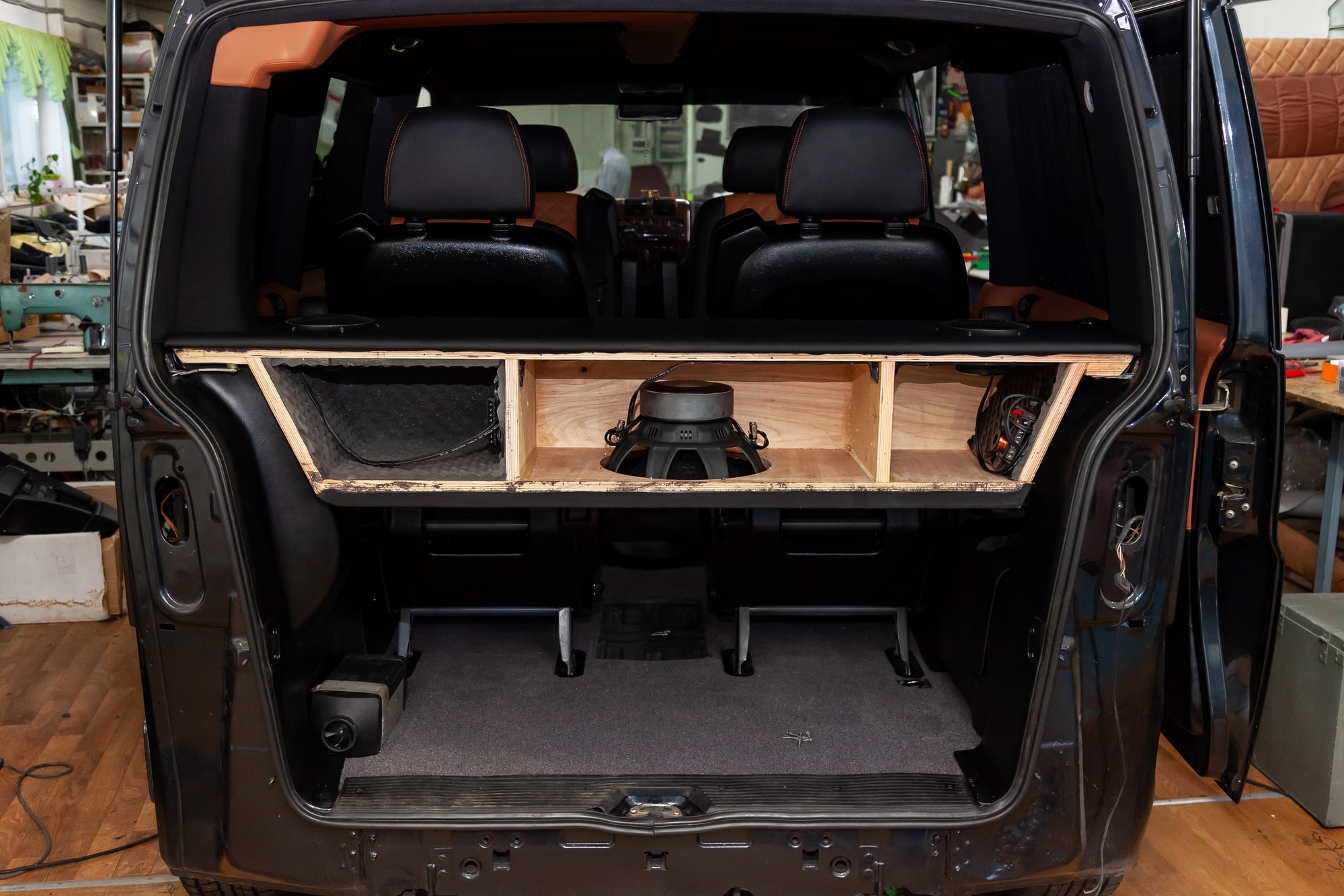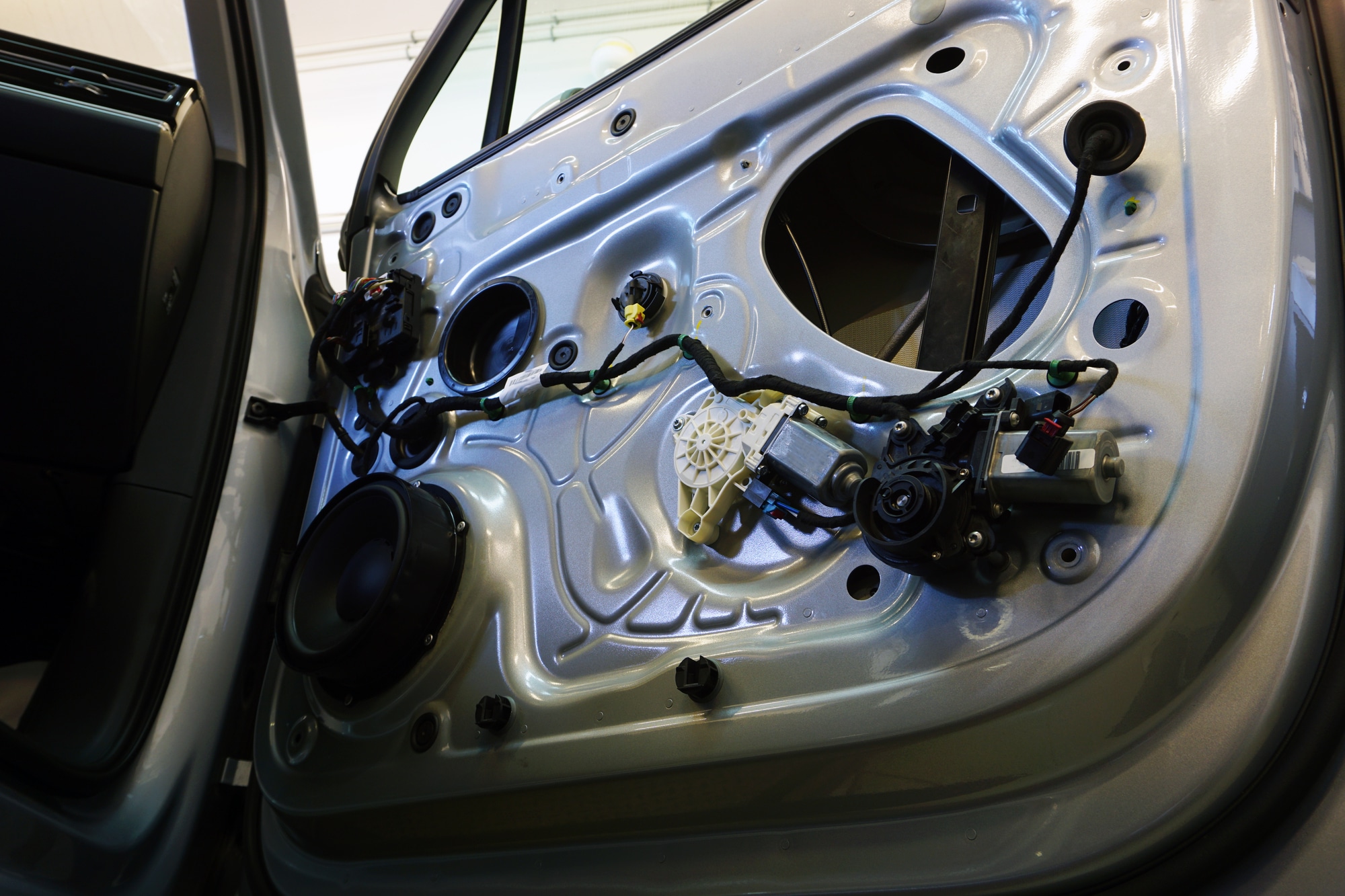Adding a subwoofer to your audio system can take your music to the next level, but if you’ve never installed one before, it can seem like a daunting task.
Don’t worry, we’ve got your back!
In this post, we’ll take you through all the steps you need to know to choose the right subwoofer, prepare your ride, wire it all up, and get your subwoofer thumping in no time. So grab your tool kit and get ready to turn things up to 11!
Choosing a Subwoofer For Your Car
When it comes to choosing the right subwoofer for your ride, there are a few key factors to consider.
First and foremost, size matters, but bigger isn’t always better. If you choose a subwoofer that won’t fit in your car, you’ll be going nowhere fast. A subwoofer that’s too big for the space will sound boomy and muddy, so make sure you choose a subwoofer that will fit snugly.
If you’re working with a small car or have very limited space, look into shallow-mount subwoofers. These bad boys are designed to fit in tight spaces, so you won’t have to sacrifice your trunk space for bass.
If you’ve got a van or truck, you can go ahead and treat yourself to a bigger subwoofer. The larger the subwoofer, the more air it can move, and the more powerful the bass will be.

Next up is power handling. You’ll want to make sure that the subwoofer you choose can handle the amount of power that your amplifier can put out.
If you’re looking for a subwoofer that can handle a lot of power, make sure you get one with a high RMS (Root Mean Square) rating. Keep in mind, the more power the subwoofer can handle, the louder and deeper the bass will be.
Last but not least is impedance. Subwoofers come in different impedance ratings (usually 2, 4, or 8 ohms) which affects how much power the subwoofer will draw from the amplifier.
You’ll want to match the impedance of the subwoofer with the output of your amplifier to get the best performance. Don’t forget that impedance and power handling are interconnected, so you want to choose a subwoofer that can handle the power and has the correct impedance.
Now that you’ve got a grasp on the basics, it’s time to decide on a subwoofer type. There are two main types of subwoofers: sealed and ported.
Sealed subwoofers are also known as “acoustic suspension” subwoofers and provide a tight, accurate bass. On the other hand, ported subwoofers, also known as “bass reflex” subwoofers, can provide louder, boomy bass.
Ultimately, the choice is yours and it will depend on the type of music you listen to and your personal preferences.
With this information in mind, you’ll be able to find a subwoofer that will add serious bass power to your car audio system.
Subwoofer Install Location In Your Vehicle
Now that you’ve got your brand new subwoofer, it’s time to find the perfect spot to install it. The location of the subwoofer is crucial to getting the best sound quality, so take your time and measure your space carefully.
First, measure the area in your vehicle where you plan to install the subwoofer. You’ll want to make sure that the subwoofer you chose will fit in the space you’ve picked out.

Next, consider the location’s proximity to heat sources. If you install your subwoofer too close to your exhaust or any other heat source, this can cause damage to the subwoofer over time and affect the sound quality.
Similarly, avoid installing your subwoofer in areas with high levels of moisture, such as the trunk. Moisture can cause rust and other damage to the subwoofer and amplifier.
Subwoofer Install Wiring and Amplification
Let’s wire this baby up! Now that you’ve found the perfect subwoofer, it’s time to give it the power it needs to shake the streets.
First, let’s talk about wiring options. There are a few different ways to connect your subwoofer to your amplifier, but the most common are using RCA cables or speaker wire.
If you’re using RCA cables, you’ll need a line-level output from your factory stereo or an LOC (line output converter) to convert the speaker-level output to a line-level output. If you’re using speaker wire, you’ll need to tap into the factory wiring, but it’s usually easier to run the wire from the amplifier to the subwoofer.
Next up is amplifier selection. There are two main types of amplifiers: mono and multi-channel. A mono amplifier is designed to power one subwoofer and is the most common option for subwoofers. Multi-channel amplifiers can power more than one subwoofer, but they’re more expensive and not necessary unless you’re planning to add multiple subs to your car audio system.
Now the most important thing: matching the impedance. You’ll want to make sure that the impedance of the subwoofer and the output of the amplifier match. For example, if your subwoofer is rated at 4 ohms, the amplifier’s output should be 4 ohms. If the impedance doesn’t match, the sound quality will be affected and it could even cause damage to the subwoofer or amplifier.
In summary, the wiring and amplification process is all about matching the right output to the right input and making sure everything is connected correctly. If you’re not sure about something, consult the manufacturer’s instructions or seek the help of a professional.
With the right wiring and amplification setup, your subwoofer will be ready to rumble and make your music sound even better.

Subwoofer Installation (Finally!)
You’ve got your subwoofer, your amplifier, and all the wiring ready, now it’s time to install everything and make some sweet, sweet music.
Installation and tuning might sound like boring stuff, but it’s the key to making sure that your subwoofer sounds as good as possible.
First up, let’s get the subwoofer installed. This process will vary depending on the make and model of your car and the type of subwoofer you have, but in general, you’ll need to drill holes for the mounting screws and secure the subwoofer in place using those screws. Make sure that the subwoofer is level and secure.
Next, connect the amplifier and subwoofer using the wiring method you chose earlier. Make sure all the connections are tight and secure. And remember, double-check your connections to make sure that the subwoofer is wired in phase, the wiring is the same on both terminals, and the polarity is correct.
Finally, it’s time to tune the subwoofer. This process can be a bit tricky, but it’s essential to getting the best sound quality.
Start by adjusting the gain on the amplifier to match the output of the factory stereo. Then, adjust the crossover settings to make sure that the subwoofer is only reproducing the frequencies that it’s meant to reproduce.
You can also adjust the phase and the Q settings, which affect the bass response. Experiment with different settings until you find the sound that you like best. Don’t be afraid to tweak the settings as you listen to different types of music, as each music type may sound better with different settings.
Ready To Ride!
With the addition of a subwoofer, you’ll be able to experience your music in a whole new way and turn your car into a rolling concert venue. Picking out and installing new car audio equipment can take a bit of time, the results are well worth it.
And if you aren’t confident enough to take on installation yourself (or it isn’t going as smoothly as you hoped!), let us give it a try. At XD Audio, our knowledgeable and experienced technicians can install, repair, and rebuild most systems with ease and we can offer you plenty of sound advice to point you in the right direction.
Give us a call or stop by to discuss your options and find the system that’s best for you.
